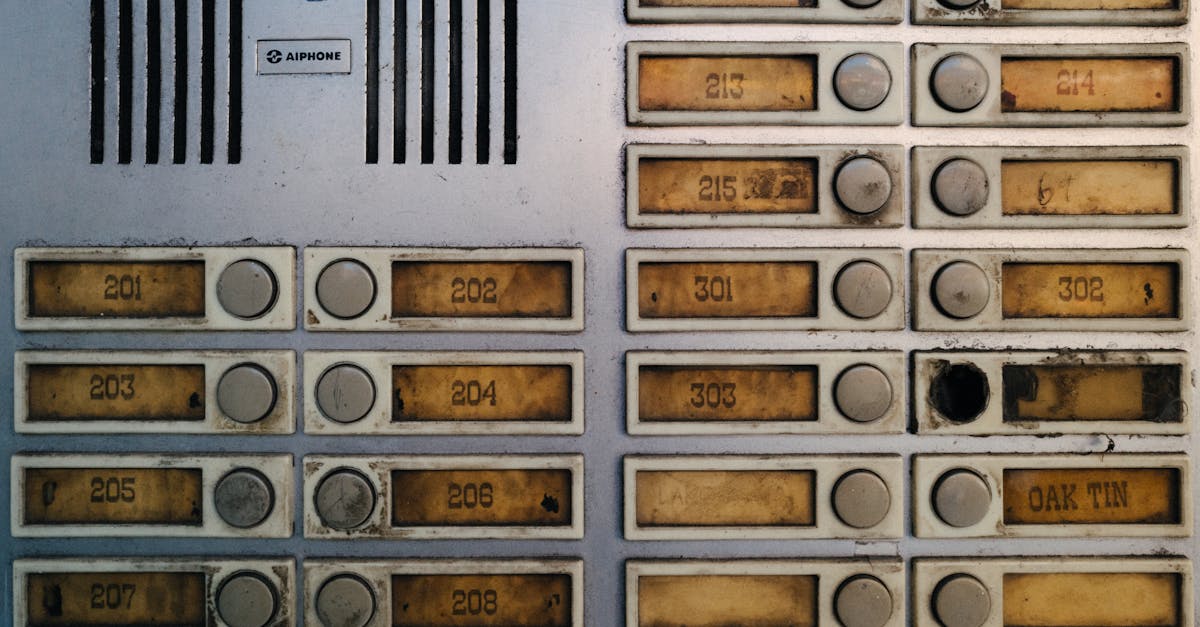
Table Of Contents
Benefits of a Larger Down Payment
Making a larger down payment on commercial real estate loans can significantly decrease the overall loan amount needed. This reduction not only helps streamline monthly payment obligations but also enhances the borrower's equity in the property from the outset. Lenders often view a sizeable down payment as a sign of commitment and financial stability, making it easier for borrowers to secure favorable terms and interest rates.
Additionally, higher down payments can lead to a stronger negotiating position for borrowers. By offering more upfront capital, they can potentially influence various aspects of the loan agreement, such as closing costs or repayment schedules. This advantage can ultimately result in considerable long-term savings, creating a more sustainable investment strategy in commercial real estate.
Advantages for Borrowers and Lenders
A larger down payment on commercial real estate loans can significantly benefit borrowers. It demonstrates financial stability and commitment, which can make a borrower more appealing to lenders. This upfront investment can also lead to better interest rates and loan terms, making the overall borrowing process more favorable. Moreover, putting more money down reduces the loan-to-value ratio, which lowers the lender's risk. This often translates into an easier approval process, as lenders feel more secure in their investment.
For lenders, a substantial down payment on commercial real estate loans minimizes risk exposure. It provides a buffer against potential declines in property value, ensuring that even in adverse market conditions, the loan is more likely to be repaid. Lenders can also leverage this advantage when determining loan terms, allowing for the potential of more profitable investment opportunities. With borrowers showing strong commitment through higher contributions, lenders can foster long-term relationships built on trust.
Challenges with Low Down Payments
Low down payments on commercial real estate loans may seem appealing at first, but they often come with significant challenges for borrowers. Lenders typically view low down payments as higher risk, which can lead to stricter terms and conditions. This may include higher interest rates or the necessity for private mortgage insurance (PMI). The borrower might also face limitations on loan amounts or property types, as lenders may be wary of investing in projects perceived as more vulnerable due to insufficient initial equity.
Navigating the complexities related to low down payments can also affect a borrower’s ability to secure future funding. With little equity in the property, lenders may have reservations about the borrower’s financial stability and capacity to manage repayment. If the commercial property does not appreciate as expected, this can create additional financial strain. Overall, the challenges of low down payments highlight the need for careful planning and assessment when considering commercial real estate loans.
Potential Risks and Implications
A low down payment on Commercial Real Estate Loans can lead to several potential risks for borrowers. Financial institutions often require a more substantial down payment to offset the risk associated with lower initial equity. This can result in higher monthly payments or unfavorable loan terms. Furthermore, inadequate down payments may limit a borrower’s ability to secure additional financing in the future, as lenders become wary of an inadequate financial cushion.
For lenders, a borrower’s low down payment signifies increased risk of default. The likelihood of financial instability can grow if the property's value fluctuates, leaving the borrower with little equity. In cases of economic downturns, properties purchased with minimal down payments may become underwater, exacerbating the risks of foreclosures and loss on investment for lenders. This scenario can contribute to a more conservative lending environment, making it challenging for those seeking to finance commercial properties.
Negotiating Down Payment Terms
When negotiating down payment terms for Commercial Real Estate Loans, borrowers should come prepared with comprehensive financial documentation. Lenders often appreciate a well-organized presentation that outlines income, cash flow projections, and a solid business plan. Demonstrating a strong financial background can create a favorable impression and encourage lenders to consider more flexible down payment options. Understanding local market conditions may also help in discussions, as knowledge of recent trends can provide leverage in negotiations.
Building a productive relationship with lenders can also play a crucial role in securing favorable down payment terms. Establishing trust and demonstrating commitment to the property can lead to a more lenient approach from the lender. It is essential to communicate with the lender openly about any concerns regarding the down payment. This dialogue can sometimes lead to creative financing solutions or adjustments that benefit both parties.
Strategies for Borrowers
Borrowers should begin by researching various lenders to understand their specific down payment requirements for Commercial Real Estate Loans. Some lenders may offer flexible terms, allowing for smaller down payments in exchange for other favorable loan conditions. This creates opportunities for borrowers who might lack the full amount typically needed. Exploring local banks, credit unions, or online lenders can provide insight into competitive options.
Another effective strategy involves enhancing the overall financial profile before applying for a loan. Improving credit scores, reducing existing debt, and demonstrating a strong business plan can make borrowers more appealing to lenders. A compelling proposal that outlines the property's potential and the borrower’s investment strategy may also encourage lenders to be more flexible with down payment requirements. Being prepared with thorough documentation can ultimately lead to better negotiation outcomes.
FAQS
What is the typical down payment percentage required for a commercial loan?
Typically, lenders require a down payment of 20% to 30% of the property's purchase price for commercial loans, although this can vary based on the lender and the specific loan terms.
Can I get a commercial loan with a lower down payment?
Yes, some lenders may offer commercial loans with lower down payment options, such as 10% or even less, but this often comes with higher interest rates and stricter requirements.
How does a larger down payment benefit me as a borrower?
A larger down payment can lower your monthly payments, reduce the total interest paid over the life of the loan, and improve your chances of loan approval due to decreased risk for the lender.
What challenges might I face with a low down payment on a commercial loan?
Low down payments can lead to higher interest rates, larger monthly payments, and may result in a higher likelihood of being underwater on the loan if property values decline.
Are there strategies for negotiating down payment terms with lenders?
Yes, borrowers can negotiate down payment terms by presenting a strong credit profile, demonstrating cash flow projections, or working with a mortgage broker who can help navigate lender options.




